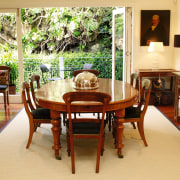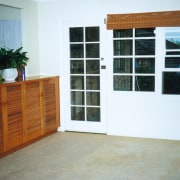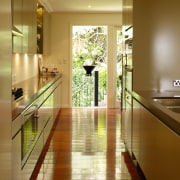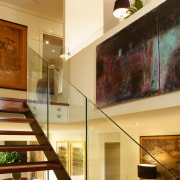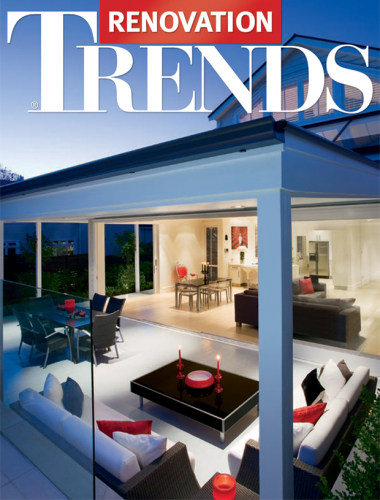Generous heart
Once made up of many small, cramped rooms, this 1970s home now features expansive, open-plan interiors

Houses built in the 1970s tend to have very small rooms and lots of them. These small spaces are often under-utilised, giving today's architects the perfect excuse to demolish walls and create expansive, open-plan spaces.
The large residence featured here was reinvented in just this way by architect Helen de Luis. The couple who own the house found they weren't using many of the smaller rooms, so it made sense to transform them into generous, open-plan living areas. With this came the added advantages of through vistas and ample natural light.
"The interior was transformed almost beyond recognition," says de Luis.
The front doors originally opened onto a lobby, with another room beyond. However the doors, their exact location, and the vista they open to, have all changed.
"I moved the entrance a couple of metres to the right to allow for the re-siting of a staircase, which in turn freed up additional living space on the floor above."
The owners both travel extensively, and have an eclectic collection of pieces.
"The front doors themselves are Chinese and chunky, setting the scene for the plethora of furnishings and artworks drawn together from the farthest corners of Asia and Europe."

Travel has also given the owners an appreciation of the generous public spaces common in hotels, says de Luis.
"With interceding walls removed, someone standing at the front door can see straight through to the rear of the residence not unlike a welcoming lobby in a grand hotel."
To the left of the front door is a new open staircase with timber treads and glass balustrading.
"We designed the staircase to enhance the more open, contemporary feel of the interior," says the architect. "The staircase leads down to a new garage at basement level and upstairs to the living areas."
To the right of the front door a new master bedroom suite has been introduced, where the garage used to be. The master suite was originally located on the floor above. Apart from a laundry and ensuite bathrooms, most of this level makes up one open-plan space.
Upstairs, a similar approach was taken, with a wall removed between the dining and living rooms, and the kitchen modernised and made smaller to give the living room more space. A study and television room are separate rooms, but otherwise this level, too, is largely open plan.
Introducing large windows has also made a big difference to both floors.
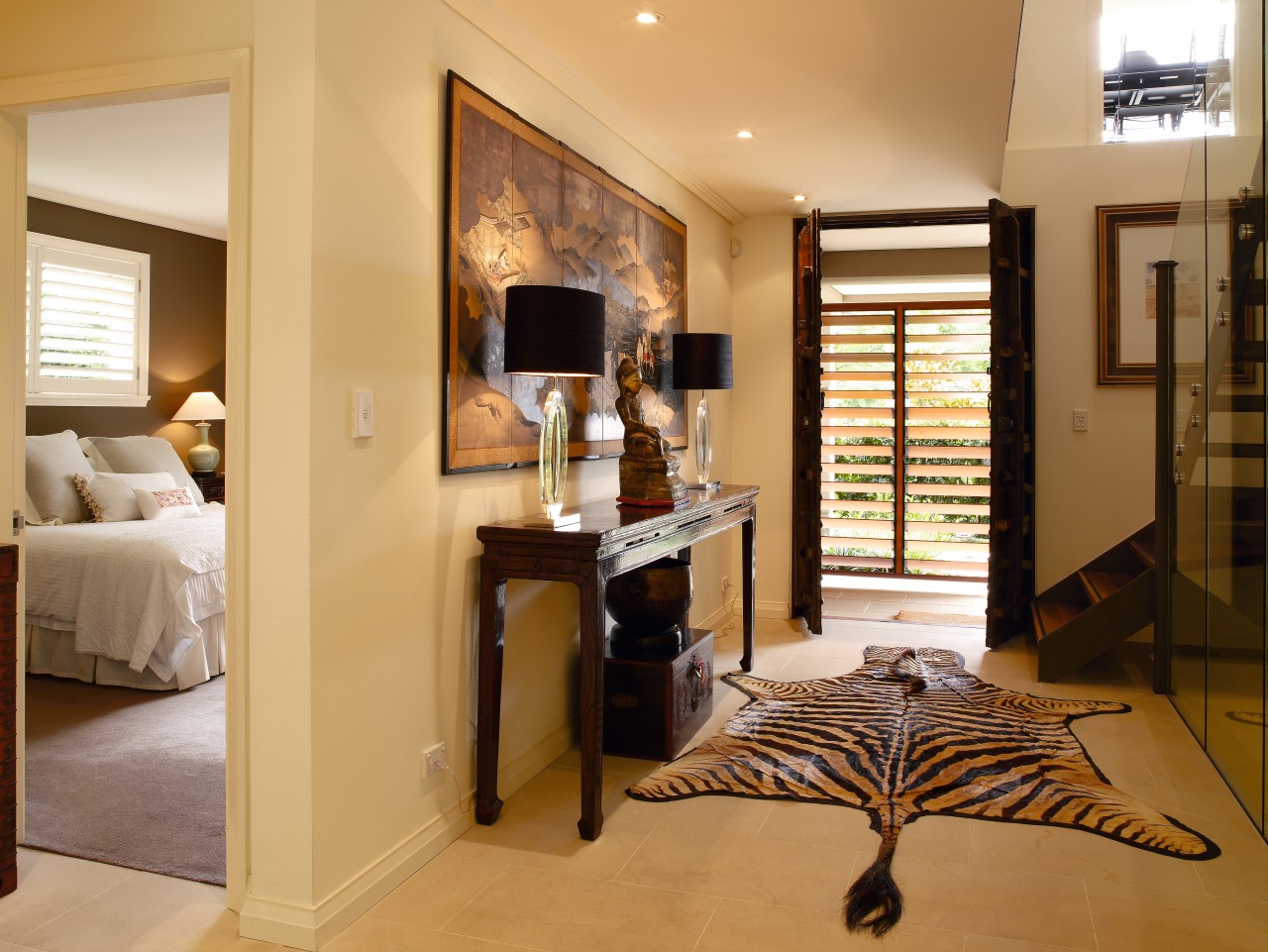
"Perhaps the biggest impact on both the home's ground and first floors is the introduction of large-scale windows to replace the smaller window frames popular 40 years ago when the house was built," says de Luis. "Door apertures were expanded and floor-to-ceiling glazed doors now open onto a new concrete veranda at the front of the home and out to a new wooden veranda at the back."
The larger doors and windows and reconsidered verandas all provide a strong indoor-outdoor feel for the house. In addition, they fulfil the owners' requirements for the living spaces to be flooded with natural light. Skylights, set in a symmetrical grid of four above the dining area, allow even more natural light into the home.
With the removal of walls there naturally comes a removal of wall space, says the architect.
"Spot lights and stretches of wall space were carefully considered so the owners could display their extensive art collection, which includes many large-scale works."
The open-plan interiors also allow the diverse antiques, artworks and furniture to occupy their own immediate spaces avoiding a cramped look when viewed as a collective whole.
"Symmetry is another feature running through the house," says de Luis. "The interior spaces are uniformly set to the left and right of the central stairs, for example, and this sense of balance can be seen even as you approach the residence.
"The relocated front door sits to right of centre, but exterior shutters mask this, visually implying the entrance is still situated in the middle of the home's facade."
Story by: Trendsideas
Home kitchen bathroom commercial design
Personality plus
Classic looks, contemporary efficiency
Diving into nature

